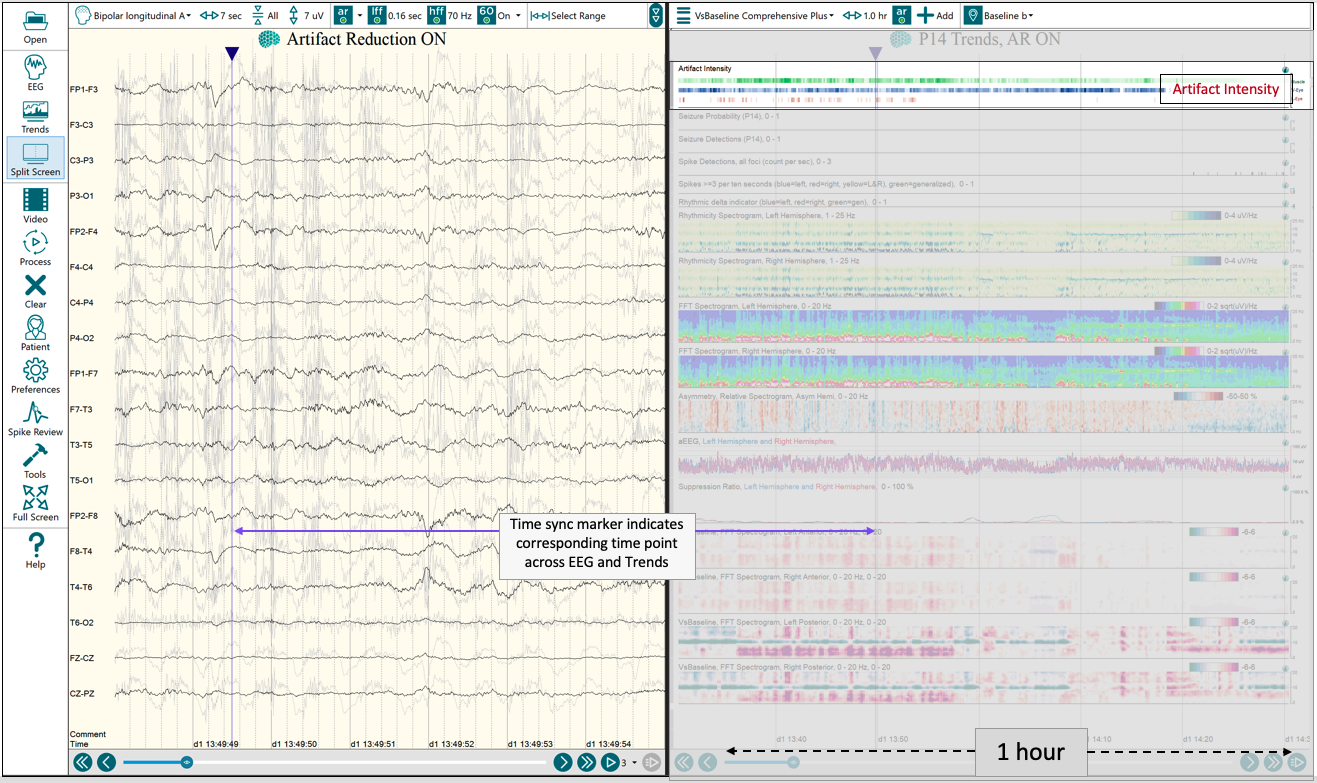Persyst Artifact Intensity shows the type and intensity of artifact in the data
The Artifact Intensity trend displays color-scaled indicators representing the presence and quantity of three physiological non-cerebral (artefactual) signals in the EEG as a function of time, where muscle artifact is represented as green, vertical saccadic eye movement/blink as blue, and horizontal/lateral saccadic eye movement as red.
The intensity of each type of artifact is calculated as a measure of power and represented according to color saturation. For example, the more muscle activity present in the data, the darker the green bar will be.
After quantifying the artifact present within the EEG, it is then reduced from the EEG using blind source separation and displayed alongside the EEG signal as a watermark, allowing the user to quickly visually discern the non-cerebral from cerebral signal.
The presence, intensity and the type of artifact can correlate relevant clinical information, such as patient state, to the EEG. In the example below, the user can tell with a glance at the one-hour Trends view that the patient was likely awake over that time period.

P14 split EEG and Trends view with the Artifact Intensity trend highlighted. In this example, all three types of artifact defined are present. Artifact type is represented by color and intensity is represented by color saturation. The reduced artifact is seen as a watermark behind the EEG signal.

